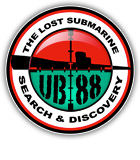
The last B-36 (52-2827) before coming off the production
line on July 1, 1954
Lockheed Martin Photo
The Last
B-36
Of 386
B-36's built from 1946 to 1954, only four survive.
B-36-J-III 52-2827 City of Fort Worth was built in Fort
Worth, Texas in 1954, and was retired in 1958. It was
displayed at Amon Carter Field, later Greater Southwest
Airport, from 1958 until the late 1970s, when it was moved
to Carswell Air Force Base. Exposed to the extremes of
Texas weather, the giant aircraft slowly deteriorated. In
the early 1990s the aircraft was disassembled and moved
indoors to hangar space at the factory where it was built,
donated by Lockheed Aircraft. A group of dedicated
volunteers, many of them retired Convair employees who had
worked on the original B-36 assembly line, spent 40,000
man-hours restoring the plane.
The aircraft is officially owned by the National Museum of
the United States Air Force (NMUSAF), but was on loan to
the B-36 Peacemaker Museum. In 2006, it was agreed that the
Peacemaker Museum did not have the proper resources to
restore and exhibit the aircraft, and the aircraft was
trucked to the Pima Air & Space Museum (PASM) in
Tucson, Arizona where it is being restored and will be
exhibited after restoration. In the Tucson climate it is
possible to display aircraft outdoors without the kind of
deterioration that occurred in Fort Worth. The National
Museum of the United States Air Force still retains
ownership of the aircraft.
Pima Air
& Space Museum
Tucson, Arizona
If
you've never seen a B-36 Peacemaker up close, it's
difficult to grasp just how large this aircraft is. I'm
speaking from experience, because I had never seen one in
person. Before beginning the sonar search for the B-36 off
of San Diego I really wanted to get a good sense for
exactly what it was we were looking for. I figured the only
thing to do was to go and see one. I knew the last B-36
ever manufactured was undergoing restoration at the Pima
Air & Space Museum in Tucson, Arizona. I contacted the
Director of Collections & Aircraft Restoration, Scott
Marchand, and asked him if he would allow me access to the
plane. He was more than happy to help out.
When I finally arrived at the museum I was greeted by
Restoration Manager, John Heibler. John took me and my
family on a personal tour of the B-36. John is very
knowledgeable guy. He took the time to explain the aircraft
to me and gave me full access to the plane. I was able to
climb the ladder into the aft crew compartment and from
there into the tail. He also allowed us to climb through
the bomb-bay and into the forward crew compartment. From
there we could climb the steps into the cockpit. I spent a
fair amount of time in there and took lots of pictures. I
wanted to stay inside longer, but it was getting pretty
hot.
Back outside I took special note of how large the exterior
features were. The landing gear, wings, and tail are
enormous. I wanted to see the propellers, so John drove us
a short distance to where the props and jet pods were being
stored. I took several pictures of the massive 19 ft
propellers and jet pods. John spent the better part of two
hours with us showing us other aircraft and different areas
of the facility. My daughter thought it was going to be
boring looking at some old plane. After we left the museum
she couldn't stop talking about how much fun she had. If
you're ever passing through Tucson, be sure to stop by and
check out the Pima Air & Space Museum.

Entrance to the Pima Air & Space Museum.

Beauty of Flight

"City of Ft. Worth", the last B-36.

Sitting in the pilot seat I couldn't imagine what it was
like to fly such a huge aircraft. CRAZY!

A view of the cockpit from the bottom of the steps.

The copilot seat.

The flight engineer's station.

The navigator and bombardier stations.

Restoration Manager, John Heibler explaining the bomb racks
in the forward bomb-bay.

The forward landing gear.

Main landing gear.

Standing beneath the tail gives a real sense of scale.
HUGE!

One of the 19 ft diameter propellers from the last B-36.
Photo by John Heibler

A close up of the propeller hub.

A cutaway of a Pratt & Whitney R-4360
engine.
